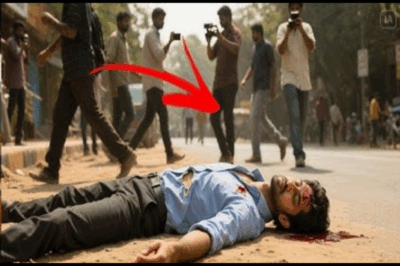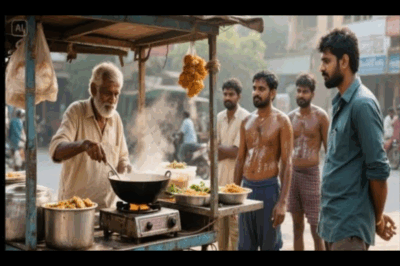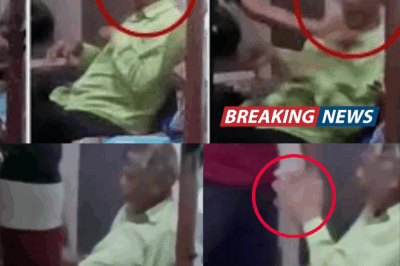Outrage in Haryana: Public Demands Justice in the Brutal Death of Manisha from Dhanana Lakshman Village
Introduction
Haryana is gripped by anguish and anger following the brutal and mysterious death of Manisha, a young woman from the village of Dhanana Lakshman, Bhiwani. As questions intensify around the circumstances of her death, a massive crowd from across the state gathers, demanding justice. The incident, already being labeled as one of the most shocking cases in India’s recent history, has triggered a rare show of unity, with citizens, activists, and public officials converging on her village, refusing to leave until transparency is achieved and Manisha’s family is assured of justice.
A Crime That Shook the State
The details of Manisha’s death are heart-wrenchingly graphic and point to brutal violence. Locals and early witnesses, including Jaydev Dagar, a district councilor from Rohtak, were among the first on the scene and vividly described the state in which Manisha’s body was discovered. “Her throat was slashed, the skin around her neck hung from her body. Her face was so disfigured it was almost unrecognizable. Her jaw was exposed. I’ve seen crime scenes, but never something this savage,” he recounted.
Rumors of suicide have been widely dismissed by eyewitnesses and community leaders alike. The suspicion, locals insist, is not just about the act itself, but the entire process of the investigation—how police, doctors, and administration have handled or, as many claim, mishandled the situation from the very beginning.
Community’s Collective Grief and Anger
“Our daughters are no longer safe. If they target ‘Manisha’ today, tomorrow it could be anyone—our sisters, our own children,” a community member shared, echoing a sentiment widely expressed among the swelling crowd in Manisha’s village.
Crowds from far beyond Bhiwani and Rohtak—villages from every corner of Haryana and even adjoining states—have united in grief and outrage. Slogans demanding the harshest punishment for the perpetrators raised the tension. Concerns over the safety of women, the impact on transgender individuals, and a call for systemic change pervaded these emotional gatherings.
The Questionable Role of Authorities
One of the most disturbing aspects surfacing from the unfolding events is the alleged pressure from local administration and political circles to suppress facts and pacify the family with a narrative of suicide. Family, villagers, and leaders argue that this is not only an insult to Manisha’s memory but a calculated ploy to protect influential individuals who may be involved or indirectly responsible.
Jaydev Dagar, who stayed at the crime scene from 7:30 AM to 3:30 PM, underlined that no suicide note was found in his presence, despite later official claims. This has raised grave questions about the legitimacy and transparency of the police investigation and post-mortem process.
“When there’s a real suicide, the administration doesn’t act like this. Here, not only were senior police officers transferred and suspended overnight, but the response and secrecy have made the community even more suspicious,” he emphasized.
Political Pressure and Suspicions of a Cover-Up
According to villagers and activists, there is immense political pressure, both from ruling and opposition entities, to divert or close the matter quietly. The suspicions are aggravated by the sudden changes in police personnel handling the case and the allegedly inconsistent medical reports.
“If suicide was the clear cause, why would officials be suspended, why all this secrecy? Has there ever been a case where an SP or SHO was suspended in an average suicide?” a community leader questioned, pointing explicitly to a systematic attempt to sidetrack the investigation.
Rumors abound that powerful individuals are orchestrating a cover-up, fearing that a full investigation may expose connections to political families or business interests. The narrative of suicide, some believe, is being heavily weaponized to avoid public unrest and scrutiny.
Forensic and Medical Questions
The community and those gathered at the scene unanimously challenge the suicide theory on scientific grounds. Early medical reports stated Manisha’s neck was sliced with a sharp object, with post-mortem details showing injuries consistent with brutal physical violence and possible sexual assault—not self-inflicted harm. Claims have arisen around possible acid attack elements, and even speculations of organ trafficking, based on the condition of the body.
Later, however, unrelated poisons and absence of sexual assault were cited in revised official reports—another glaring contradiction that has only fueled further anger and mistrust.
Public Outcry and Refusal to Perform Cremation
The intensity of public outrage is so strong that Manisha’s family has refused to conduct her last rites until justice is guaranteed. “Our daughter is not just ours, she belongs to the whole country now. If this can happen to Manisha, it can happen to anyone’s daughter. We want answers, not consolation,” said a grieving relative.
Activists called for country-wide solidarity, urging people—even those far from Haryana—to show up or offer any support possible, swearing that the fight is not just for one family, but for every daughter in India.
Hundreds, possibly thousands, continue to gather—demanding an impartial investigation, public release of all evidence, and the immediate arrest of those found responsible.
A Pattern of Administrative Pressure
Numerous accounts suggest that, as the protests grew, officials repeatedly contacted the family and local panchayat leaders, asking them to hurry the cremation or accept the administration’s version of events. Villagers claim family members were coerced into recording videos exonerating the administration, only deepening public disgust.
Such attempts only backfired, as more people began to make their way to Dhanana Lakshman, swelling the crowds and intensifying the pressure on both local and state authorities.
Demands for Justice and Government Accountability
At the heart of the protest is a unified demand for accountability, transparency, and justice—not only in Manisha’s case, but in every incident where women’s safety is threatened or where the justice system is compromised.
One activist shouted, “The government says ‘Beti Bachao, Beti Padhao’, but there can be no education without safety. Save our daughters first, only then can they dream of a future.”
Protesters echoed demands not to leave until the truth is made public, with the culprits punished under the harshest possible laws, including calls for the death penalty.
National Solidarity and the Way Forward
The outcry has now captured national attention. Communities from Hyderabad, Bengaluru, Surat, Gujarat, and more have voiced their support online and in person. The incident is being called one of the most heinous crimes in modern Indian history—comparable to past cases that have forever scarred the nation.
All eyes are now on state and central government authorities. The crowd at Manisha’s village grows daily—an unwavering reminder that this fight is not isolated. Protesters insist that justice for Manisha must set a precedent, not just for Bhiwani, not just for Haryana, but for all of India.
Conclusion
Manisha’s family and the citizens of Haryana have made it clear: there will be no last rites, no silence, until justice is served and the truth is brought to light. As the world watches, the question remains—will this outcry compel action against impunity, or will it join the long list of battles women in India are still fighting? The days ahead will determine whether Haryana chooses to stand for its daughters, or risks a legacy of abandonment and fear.
News
कहानी का शीर्षक: इंसानियत की सबसे बड़ी दौलत: टैक्सी ड्राइवर राज और विदेशी पत्रकार मारिया की सच्ची कहानी
कहानी का शीर्षक: इंसानियत की सबसे बड़ी दौलत: टैक्सी ड्राइवर राज और विदेशी पत्रकार मारिया की सच्ची कहानी शहर की…
कहानी का शीर्षक: ईमानदारी का इनाम: एक गरीब वेटर, एक अरबपति का दिल, और बदलती किस्मत
कहानी का शीर्षक: ईमानदारी का इनाम: एक गरीब वेटर, एक अरबपति का दिल, और बदलती किस्मत क्या ईमानदारी की कोई…
सड़क की धूप और इंसानियत की ठंडक: रमेश की कहानी
सड़क की धूप और इंसानियत की ठंडक: रमेश की कहानी दिल्ली शहर की दोपहर थी, गर्मी अपने चरम पर थी।…
वह छोले-चावल का ठेला, जिसने एक अरबपति को भी भूख का असली स्वाद चखाया
वह छोले-चावल का ठेला, जिसने एक अरबपति को भी भूख का असली स्वाद चखाया जुलाई की तपती दोपहर थी। वाराणसी…
Closed Doors, Open Wounds: The Viral Video that Unmasked a Son’s Violence against His Father
Closed Doors, Open Wounds: The Viral Video that Unmasked a Son’s Violence against His Father Introduction What happens when the…
The Vanished Star: The Painful Life and Mysterious End of Bollywood’s Beloved Sister, Nazima
The Vanished Star: The Painful Life and Mysterious End of Bollywood’s Beloved Sister, Nazima Introduction In the golden age of…
End of content
No more pages to load












